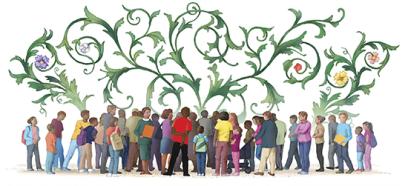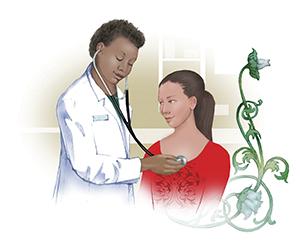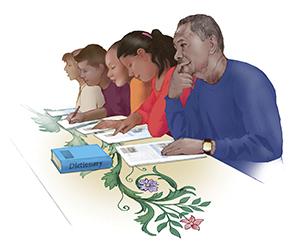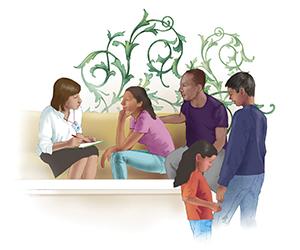In 2007, Walter P. Webb Middle School faced a crisis. One evening in January, the superintendent at the time held a meeting at the school in Austin, Texas, to let students, parents, teachers, and community members know that at the end of the academic year, their school would close. Thanks to a new state law focused on accountability, the superintendent, with the approval of the school board, could close a school because of low test scores. The superintendent told the community that students would be sent to two other middle schools in the Austin Independent School District, both of which were struggling academically.
The hundreds of people who attended the meeting at Webb were outraged. They took turns going up to the microphone to urge school district leaders to reconsider. They reminded district officials that students hadn’t even taken the end-of-year state-mandated tests, and they demanded that students be given another chance. The superintendent held firm: he believed that not enough students would pass the tests.
“It was a terrible meeting,” recalls Allen Weeks, a community activist. “We were told that the kids had failed, the teachers had failed, the community had failed—everybody had failed except the school district.” The superintendent’s words hit a nerve for Weeks. “I thought, he would never say this on the other side of town.”
Webb is located in northeast Austin, a low-income area removed from the trendy restaurants and gleaming buildings of the University of Texas at Austin that have come to signify the wealth of downtown. Separated by I-35, a monstrous double-decker freeway, these affluent neighborhoods are a world away for Webb’s students, nearly all of whom are poor enough to qualify for free or reduced-price meals at the school. One of those students, Zaira Garcia, pleaded with the superintendent that night to keep her school open. “Teach us, educate us, do not tell us the answer is closing Webb down,” said the eighth-grader. “Give us resources. We need clubs, teams, and committees of parents and students. There is nothing wrong with the students. There is nothing wrong with this school building. We just need a better system.”
Garcia’s statement would prove prescient. The “better system” would turn out to be a community school.
After that night, a group of parents, teachers, and community members decided to save their school. They had one month to convince the school board to reject the superintendent’s plan for closure.
A neighborhood resident, Weeks was determined to help the community keep Webb. He was a former teacher who had taught high school English in North Carolina and Virginia and had also done youth development work overseas. Since moving to Austin a few years earlier, he had spent much of his time volunteering at John H. Reagan High School, the high school Webb feeds into.
Weeks used his community organizing skills to help this group of parents, teachers, and community members figure out what would dramatically improve their school. They agreed that Webb most needed a way to support student achievement by bringing social services to the school. So the group wrote a proposal to the school board calling for the creation of a family resource center where a coordinator would connect parents with housing, immigration, counseling, and other resources, so that teachers could focus on teaching and students could focus on learning.
The school board accepted the group’s proposal and declared that Webb would remain open. With a renewed sense of purpose among students, parents, and teachers, enough students did in fact pass the state-mandated tests, undercutting the superintendent’s reason for closing the school.
One year later, in 2008, Reagan High School faced a similar crisis. Again, the superintendent invoked low test scores as a reason to close the school.
Immediately, Reagan’s Parent-Teacher Association contacted the group that had saved Webb and asked for help with Reagan. The group met with students, parents, and teachers at Reagan, and collectively, they crafted a wide-ranging plan, including the implementation of wraparound services similar to those established at Webb.
At the time, the plan had no specific name. “It was just common sense,” Weeks says.
Without even knowing it, community members had turned Webb and Reagan into community schools. It would be several months before they would first hear the phrase “community school,” at a conference in Portland, Oregon, led by the Coalition for Community Schools.
Today, their plan to transform one school on the brink of closure into a place where students and teachers thrive has evolved into a strategy to turn 13 high-poverty schools in Austin, including several elementary schools, into community schools. Last fall, the American Federation of Teachers Innovation Fund and the National Education Association contributed a combined $180,000 toward the effort. The money supports community dinners and other meetings to generate buy-in from teachers and community members, as well as the hiring of personnel to grow the community school model.
Ken Zarifis, president of Education Austin, the locally merged affiliate of the American Federation of Teachers and the National Education Association, and Weeks, now the executive director of Austin Voices for Education and Youth, a nonprofit that helps coordinate social services at Webb and Reagan, have helped state lawmakers craft legislation to encourage the development of community schools in Texas. They have also met with public school teachers and administrators from Dallas and Houston, who are eager to learn how to establish their own community schools.
“We’ve got Webb and we’ve got Reagan,” Zarifis says proudly. “But I really think we’ve got to hit this early. What would happen if we had an entire feeder pattern that had all these supports from the minute a child stepped into the classroom?”
By working together, the teachers’ union, the school district, and community leaders hope to find out.
Inside a Family Resource Center
Turning Webb into a community school did not require the school district and the community to start completely from scratch. Several nonprofit organizations were already partnering with the school so that students could access an array of supports. But there was very little coordination.
“Before I got into this position, there was one child [at Webb] who had three mentors and one child who had none,” says Margaret Bachicha, academic dean of student support services, who oversees social services at Webb. “The better the coordination, the more likely you are to pinpoint and target what the student needs and what the family needs to succeed.”*
Today at Webb, nearly 90 percent of the school’s 705 students receive at least one type of service through more than 30 community partners. These partnerships enable students to access a range of services, including attending afterschool programs run by the Boys and Girls Club, participating in a college mentoring program offered by Breakthrough Austin, and receiving free immunizations and physicals thanks to a mobile clinic that visits the school.
Partnerships also extend to supporting families. The school works with nonprofit organizations that help parents with legal, employment, health, and housing issues. To coordinate these services, a family resource center is located at Webb. Housed in a doublewide portable trailer behind the school, the center is run by Austin Voices for Education and Youth. Inside, Julie Weeks, the center’s director, and Angelita Tobias, a social worker, meet with up to 300 families throughout the school year. Julie, a former nurse, is the wife of Allen Weeks, Austin Voices’ executive director.
Both women are in close contact with Bachicha, whose office is in the actual school building, and they sit on the child study team that she coordinates for the school. The team is made up of teachers and administrators, as well as two representatives from Communities In Schools, a national nonprofit that partners with Webb to help eliminate the barriers that often contribute to students dropping out of school.† They meet twice each week to discuss students who are struggling with academic achievement, attendance, or behavior issues. If, for instance, the team agrees that a student needs counseling or learns that a family may soon lose their home, it will refer the student and his or her family to the family resource center, which can connect them to appropriate supports.
The community school strategy, however, is about more than just wraparound services. The very reason that school staff members and community organizations work together is so that schools and families can keep student learning front and center.
At the beginning of the school year, the family resource center asks that families fill out a survey to gauge what types of services they may need. The family resource center keeps those surveys on file and then pulls them when families seek out the center’s help. Julie Weeks estimates that about 75 percent of families return the surveys each year.
On a given day, anywhere from one to eight parents will walk into the center asking for help with domestic violence, housing, or legal issues, among others, Weeks says. The center currently case manages approximately 80 families, meaning that Weeks and Tobias regularly meet with them to help resolve issues throughout the year, or sometimes throughout all three years their children attend the school.
Besides connecting families with services, the center also provides direct assistance with utilities. According to Weeks, a grant from the city of Austin enables the center to give families up to $1,000 each year to prevent electric bills from going unpaid.
One April morning, Weeks shows a visitor around the center. In stark contrast to the heat and humidity outside, the inside of the portable trailer is cool and inviting; the air conditioning is on full blast. To the left of the door is a reception desk with fliers in Spanish and English about upcoming events, such as a class for parents on how to talk with adolescents. Just past this desk is a small sitting area with a green sofa, a green easy chair, a coffee table with flowers, a toddler-sized table and chair, several children’s books, and toys. Green curtains frame two tiny windows above, giving the place a homey feel.
Next to this space is Tobias’s office, the door of which is often closed for privacy when she meets with families. On the other side is a classroom used for adult education classes, like the one Steve Pina is teaching this morning. Seven women, all of whom are Hispanic, are enrolled in his English as a second language class, which takes place in the resource center for two and a half hours three days a week. Weeks explains that Pina works for the school district’s adult education department and that his students are mothers of students at Webb. Most of the women are from Mexico; others come from El Salvador, Guatemala, and Honduras. Many work two jobs and have enrolled in the class to improve their English.
On the board, Pina has written “decrepit (adj.),” along with a sentence: “Mr. Jones is going to have a hard time selling his decrepit 15-year-old truck.” With their textbooks open, he and his students move on to another part of the lesson: ordering food at a fast-food restaurant. After Pina “orders” two containers of cole slaw and 10 lemonades, a student haltingly reads, “For here or to go?” The women then practice their pronunciation by slowly reading the vocabulary words out loud: “cole slaw, sandwich, fries, coffee, chicken, shake.” One student doesn’t understand the last word and asks in Spanish, “What’s a shake?” A classmate turns to her to explain. “It’s very thick,” Pina adds.
Weeks says 28 students initially signed up for the class, for which the family resource center recruited parents. But with the demands of family and work, enrollment has dwindled; 8 to 12 students now usually attend. Those who complete the class will benefit not only themselves but also their children, Weeks says. “When parents are involved in pursuing their own learning, they’re more supportive of their children’s education.”
Relying on Partnerships
Raul Sanchez, the principal of Webb, attests to the daily stress that parents face. He says that more than a third of students at Webb come from single-parent households, usually headed by a single mother. For the most part, parents are construction workers, day laborers, and housecleaners. Few have an education that extends beyond high school. Sanchez says that some of Webb’s parents attended elementary school but had to drop out to work in the fields in Mexico.
Because many parents hold low-wage service industry jobs with little stability, the school has an extremely high mobility rate: 25 percent of students who begin the school year at Webb leave before the year ends, Sanchez says. While Webb’s daily attendance rate has improved since becoming a community school (average attendance is around 95 percent), ensuring students come to school is still a challenge. Many parents often leave their homes to go to work as early as five in the morning and end up leaving their children unsupervised, trusting that they will come to school on their own. Parents “will wake their children, get them ready, prepare their food, and expect that they will just walk themselves to school, which doesn’t always happen,” Sanchez says.
He has found that most parents, even though they themselves have very little education, came to this country in search of new opportunities for their children, and many are doing the best they can.
As principal, Sanchez realizes he cannot control the external factors—students’ home lives, for instance—that may hinder their education. And so he depends on the many partnerships his school has developed over the past eight years to help his students succeed. “Whether it be mentoring, wraparound services for families, direct counseling, someone is stepping in to fill that gap,” he says. Such partnerships “allow teachers to focus on what they do best. And that is to teach, to develop and plan lessons that matter.”
Sanchez attributes his school’s improvement—Webb is now the highest-performing low-income middle school in the district—to the many partnerships that have enabled teachers to focus on teaching and students to focus on learning. For instance, the school receives more than $350,000 each year thanks to a grant from the United Way for Greater Austin to implement wraparound services for students and families.
Among the partnerships Sanchez is most proud of is getting a mobile clinic to come to Webb so students can receive free physicals, which are required for them to participate on the school’s athletic teams. The school was able to schedule these physicals thanks to the work of Julie Weeks in the family resource center. Before the mobile clinic, few students participated in afterschool sports at Webb because the district offered free physicals only once a year and not on school grounds, making it difficult for families to use the service. And since many families lacked health insurance, they were unable to pay for their children’s physicals elsewhere. Now participation rates on Webb’s athletic teams have soared, and teams are winning, adding to school pride.
Another organization that greatly benefits Webb’s students is Austin Partners in Education (APIE). This group coordinates professionals—researchers, engineers, and retired teachers, among others—who volunteer to help sixth- and eighth-graders in their math or reading classes. Before working with Bachicha and Sanchez at Webb, the volunteers would come with their own lessons. Upon learning that was the case, “I said, ‘that’s wonderful,’ ” Sanchez recalls, “ ‘but the left [hand] needs to know what the right is doing.’ ” Now the work of APIE volunteers is more closely aligned to the lesson plans of the classroom teachers.
As principal, Sanchez stays in constant contact with Julie Weeks. They have each other’s cell phone numbers and exchange emails several times a day. That way, when students and families require immediate assistance, the school can help put supports in place. For example, when a mother recently registered her daughter as a new student at Webb, the daughter needed counseling right away. According to Sanchez, the mother told him that the two had moved away from the girl’s stepfather, who had impregnated her. “We knew there had to be wraparound services for the family,” he says. So the resource center called Tandem, an organization in Austin that works with pregnant middle school students.
At Webb, teachers often reach out to the family resource center on behalf of students. Petra Rodriguez, who teaches sixth-grade social studies, says that she contacts the center at least once a week. Sometimes, she recommends students receive counseling because of abuse they may have experienced or witnessed at home. She also recommends eye exams for students when she notices they have trouble seeing the board. For students who can’t afford eye exams or glasses, the family resource center provides them with a waiver for a free exam and a free pair of glasses thanks to a grant from the Boys and Girls Club.
Rodriguez appreciates the benefits of being at a community school, both for her students and for herself. “It’s just nice to know that I am supported, and that students themselves are being taken care of beyond just their minds,” she says.
A High School Transformation
Should he or his family ever need it, an array of supports also awaits Garcia at Reagan High School. Like Webb, the school has a family resource center with a full-time bilingual social worker. And another social worker, from the nonprofit organization Communities In Schools, works in the center with both Reagan’s graduation coach and its parent support specialist. Here, these four professionals all work together.
The resource center opened in 2009, which was principal Anabel Garza’s second year at the school. In 2008, she worked with Allen Weeks and committees of parents and students to formulate a plan for the creation of a center—and for pressuring the district to keep Reagan open. Their work had such an impact on the local community and gained so much publicity that a book about Reagan’s struggles, Saving the School: One Woman’s Fight for the Kids That Education Reform Left Behind, was published in 2012. Weeks, Garza, and Ken Zarifis, president of Education Austin, however, call the book’s subhead misleading. While they all acknowledge that Garza is a charismatic and effective leader, they say the community as a whole really did rescue Reagan.
At the time, the school was desperately in need of saving. As middle-class families left northeast Austin in the late 1990s and early 2000s, the student body became increasingly poor. Enrollment had dropped to as low as 600 students, and the graduation rate hovered just below 50 percent. Then, in 2003, tragedy struck. A student was stabbed to death by her former boyfriend in a hallway of the school. The incident made headlines and scared away neighborhood families; students left Reagan in droves.
Today, the school no longer faces such turmoil. More than 1,200 students are enrolled in Reagan, and the graduation rate is 85 percent. The school also enjoys a successful early college high school program, in which many high-achieving students take college classes from Austin Community College and the University of Texas at Austin so that they can earn up to two years of college credit before they even graduate from high school.‡ “This school has done it, to the credit of the staff,” Paul Cruz, Austin’s current superintendent, says of Reagan’s transformation. “It’s the same community. We didn’t change boundaries.” Students can still transfer to other schools, he adds, but they no longer want to.
Ultimately, Cruz says he envisions the community school model extending to other Austin schools. More than 60 percent of students in the district receive free or reduced-price meals, and nearly 30 percent are English language learners. “The needs are there for our kids,” he says. He adds that establishing community schools takes time and must be based on continuous conversations with parents, teachers, and community members. “It’s not just a top-down model.”
Zarifis emphasizes the importance of his union’s strong relationship with the district. “In Austin, we have taken great efforts to keep a line of open, honest communication with school district leaders to build a trusting, productive relationship to ultimately benefit our entire school community, but especially our kids,” he says. “We have an administration that wholeheartedly supports our work with community schools and is a partner in their development and success.”
Despite being in Texas, a right-to-work state, Zarifis says that the prominent role of Education Austin in the district’s community school effort can serve as a model for how local unions in other states currently fighting to keep collective bargaining rights can engage their members and partner with the communities they serve. “We don’t lack power just because we don’t have collective bargaining,” he says. “We just have to develop our power differently. Communication and relationships are the keys for us.”
Mia Watson, now a freshman at Texas A&M University, and a senior at Reagan when we spoke, admits that initially she did not want to attend Reagan. Even though years have passed since the school’s troubles, its tough reputation tends to persist. In middle school, she would hear classmates describe it as unsafe. But when she and her family moved four years ago, Reagan became her neighborhood school. Her mother was impressed with the early college program and told her she would learn to like the school.
Watson’s early concerns proved unfounded. She enjoyed her time at Reagan and excelled academically. “It’s a really safe school,” she says. “The adults here really care about us.” Through the early college program, Watson earned 44 college credits. She plans to pursue a major in communications and a minor in business at Texas A&M.
The day before we talked, she and her classmate Sugey Zavala, who is also now a freshman at A&M, testified before the state legislature, along with Garza, Reagan’s principal, in support of two bills that would help create more community schools in Texas. House Bills 1891 and 1892, filed by Texas state Rep. Eddie Rodriguez, were among similar bills being proposed in several states that would promote the creation of community schools. (For more on which states are considering such bills, see "Where It All Comes Together: How Partnerships Connect Communities and Schools.")
In May, HB 1892, which would have provided state funding for community school coordinators, failed. HB 1891, which would have enabled schools at risk of being closed due to poor performance to become community schools, passed in the House and had strong support in the Senate, but it was kept from a final vote by the lieutenant governor for political reasons. However, community school language made it into other legislation, opening the door for more Texas schools to adopt the model.
Allen Weeks and Zarifis, who lobbied state legislators on both sides of the aisle, remain undeterred. “Even though we didn’t get the legislation signed into law, we have everyone at the capitol talking about community schools,” Zarifis says. “This model of school improvement was unknown to most six months ago but is now part of the educational vocabulary in Texas.” He adds that their efforts have created fertile ground for community school legislation for the 2017 legislative session.
Besides engaging in political advocacy, Weeks and Zarifis have also met with educators and administrators from Dallas and Houston to show them how community school legislation could help their schools struggling with poverty and student achievement. According to Weeks, 21 schools in the Houston Independent School District alone faced reconstitution last year and would have qualified to become community schools under HB 1891.
Watson and Zavala, academically strong students with stable home lives who have not needed to rely on the family resource center, spoke to lawmakers on behalf of Reagan students, families, and teachers, who all benefit from what the community school has to offer.
As a teacher at Reagan, Matthew Payne feels especially equipped to help students. The day before we spoke, he met with a social worker in the family resource center to discuss the difficult living situation of one of his students. The 18-year-old girl recently moved out of her house because she doesn’t get along with her mother; she now lives with her boyfriend, who is beating her. Payne found out what was happening after she wrote about it in a class paper. “I’ve known this student for a couple of years,” he says quietly. “This is very personal to me.”
After talking to the social worker and others in the family resource center, Payne says they came up with a game plan for approaching the student, making her aware of resources and options, and convincing her to seek help.
Reagan, he says, is a place where teachers can draw on many resources and many people to help students. “It’s just a central part of our fabric.”
That help also extends to pregnant and parenting students. Long before Reagan became a community school, it housed a daycare for the babies of teenage mothers so they could continue their education. Today, that daycare still exists; about 20 babies are enrolled. Because Reagan is now a community school, the on-site daycare benefits from more supports. For example, when school officials noticed teen moms were missing school in order to take their babies to doctor appointments, Weeks worked with the school to win a grant for a mobile clinic to visit the campus once a week. Teen moms can now make appointments for their babies to receive checkups without having to leave school and miss classes.
The support for teen mothers goes beyond medical care for their children. Garza says that the school enables parents to eat lunch with their babies in the daycare, attend parenting classes, and engage with new mothers from a nearby church who serve as role models. The goal, she says, is that the need for the daycare will shrink as the early college program grows. For those students who do become pregnant, however, this community school will continue to support them.
* * *
While Webb and Reagan successfully connect students and families with resources that enable teachers to teach and students to learn, other schools in Austin, with the help of the grant from the American Federation of Teachers and the National Education Association, will try to emulate what they have done. Allen Weeks recalls that when Reagan initially faced closure, the community groups he was a part of spread the word. “We said, ‘The school is in crisis. It’s going to close. Come to dinner and let’s start planning.’ ”
It was out of these dinners that a sense of community—and the specifics of how students, parents, and teachers could turn their schools into community schools—first grew. “What they did at Webb and Reagan was to really listen to what was needed at those campuses and customize supports for the needs of those communities,” Zarifis says. Just as important, the voices of teachers, viewed as crucial partners in this work, were also heard.
And so Weeks and Zarifis are using community dinners and other strategies funded by the grant to seed changes in Austin’s other high-poverty schools. At these dinners, the two men, along with facilitators from their organizations, ask parents, teachers, and students to join together in small groups to answer three important questions: What do you like about your school? What does your school need in order to be the school you want it to be? And what resources would make that happen?
While transformations at both Webb and Reagan resulted from times of crisis, Zarifis says that the union and the district “want to move away from change born from crisis to change born from need.” To do so requires asking communities what exactly they need.
One night in April, about 50 people answer these questions at a community dinner at J. J. Pickle Elementary School, one of the schools that feeds into Webb. Parents, many of them Hispanic and a few African American, all of them pushing strollers and carrying small children, file into the gym for Pickle’s first community dinner—a meal of chicken and tortillas, and a chance to share their thoughts on the future of their school.
After they eat, Weeks asks everyone to split up into groups of Spanish speakers and English speakers. Each group files into separate classrooms to discuss the three questions Weeks had asked them to answer. Children, supervised by staff members from Austin Voices for Education and Youth, stay behind in the gym to play and watch a movie.
In one classroom, several of Pickle’s teachers and Patricia Sewall, a parent, sit in chairs arranged in a circle. As Gabriel Estrada, a youth and community facilitator from Austin Voices, begins asking questions, and Bernard Klinke, an organizer from Education Austin, records the group’s thoughts, a teacher turns to Sewall. “I really appreciate you being here,” she says. “I’m really sad more parents aren’t here. We don’t have parent involvement.”
Sewall explains that she listened to the voice mail message from the school telling her about tonight’s event. “That’s why I’m here,” she says and smiles. “I saved the message, too.”
Zarifis, the president of Education Austin, nods. It’s a good start.
Jennifer Dubin is the managing editor of American Educator. Previously, she was a journalist with the Chronicle of Higher Education. To read more of her work, visit American Educator’s authors index.
*For more on the important role that coordinators play in community schools, see “These Kids Are Alright” in the Summer 2009 issue of American Educator. (back to the article)
†For more on Communities In Schools, visit www.communitiesinschools.org. (back to the article)
‡For more on early college high school, see “The Early College Challenge” and “Hidalgo Sets Sail” in the Fall 2011 issue of American Educator. (back to the article)
[illustrations by Nenad Jakesevic]





